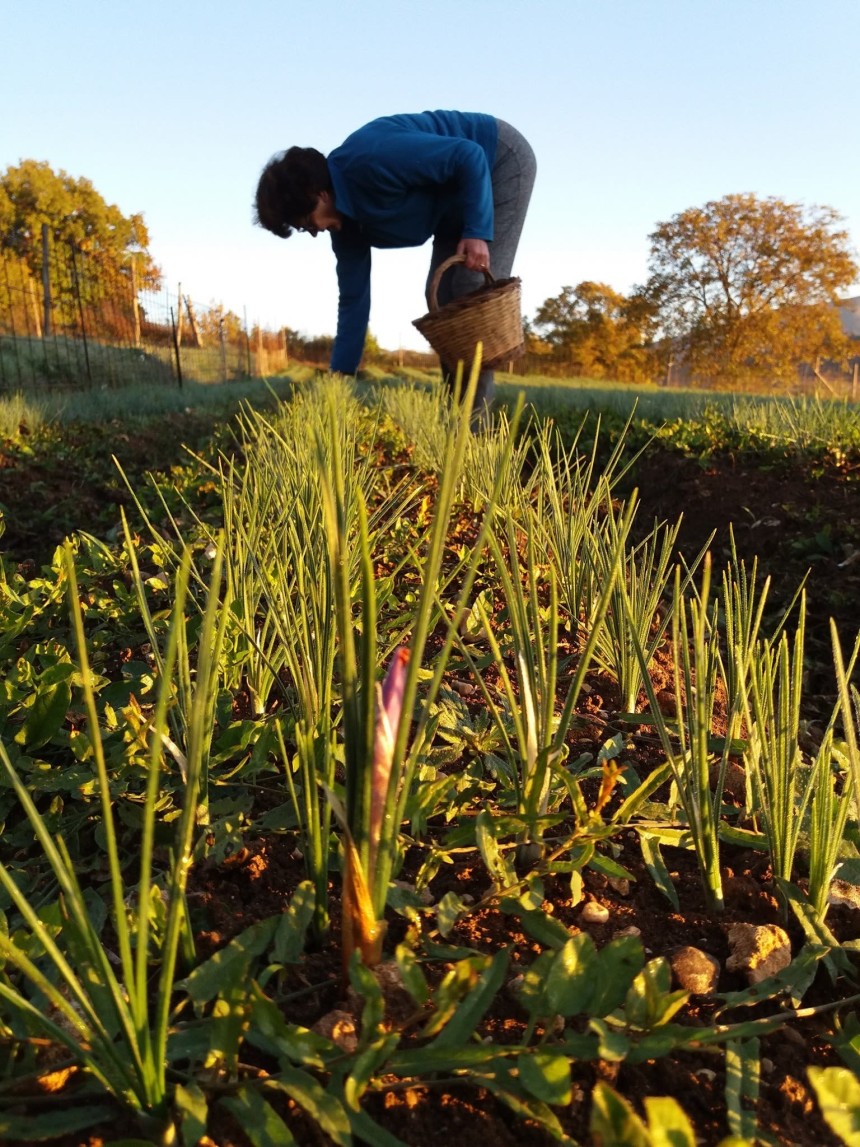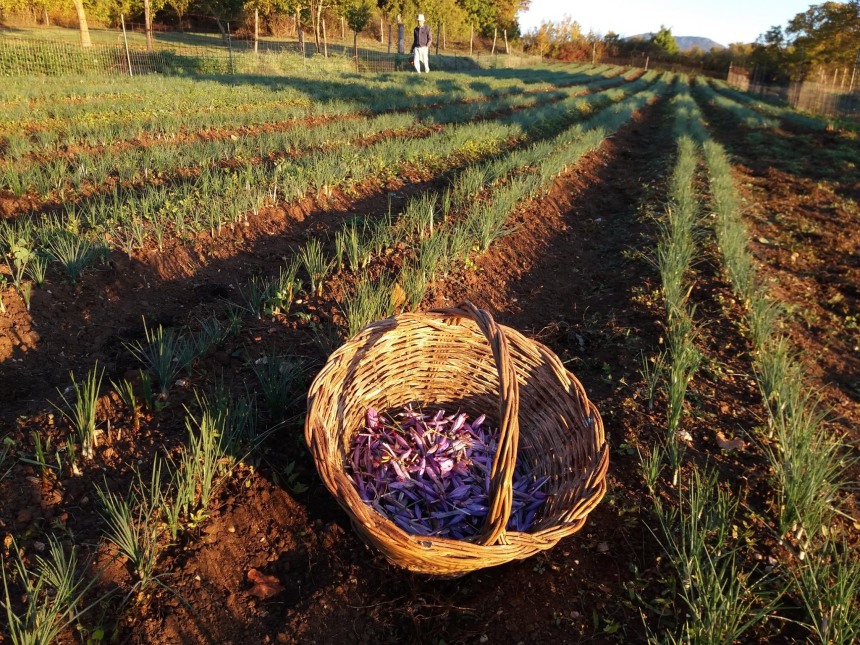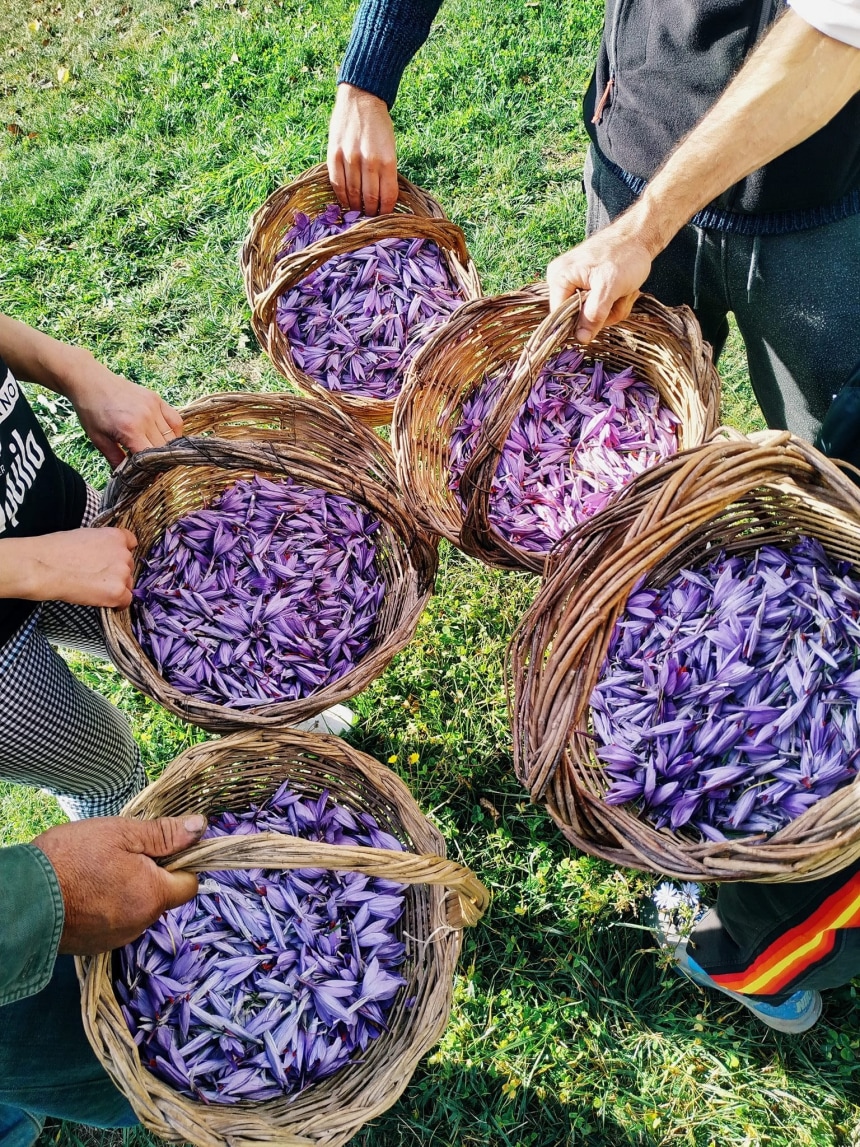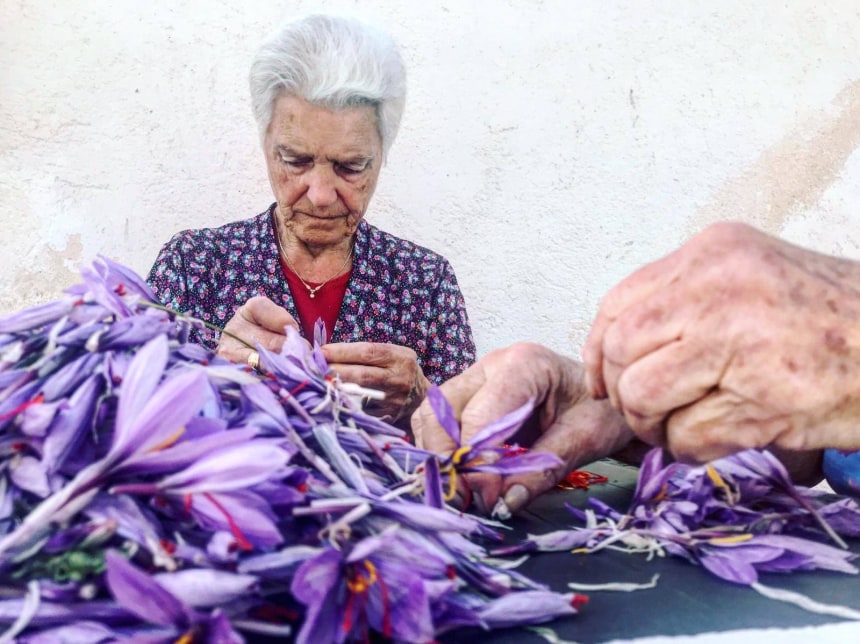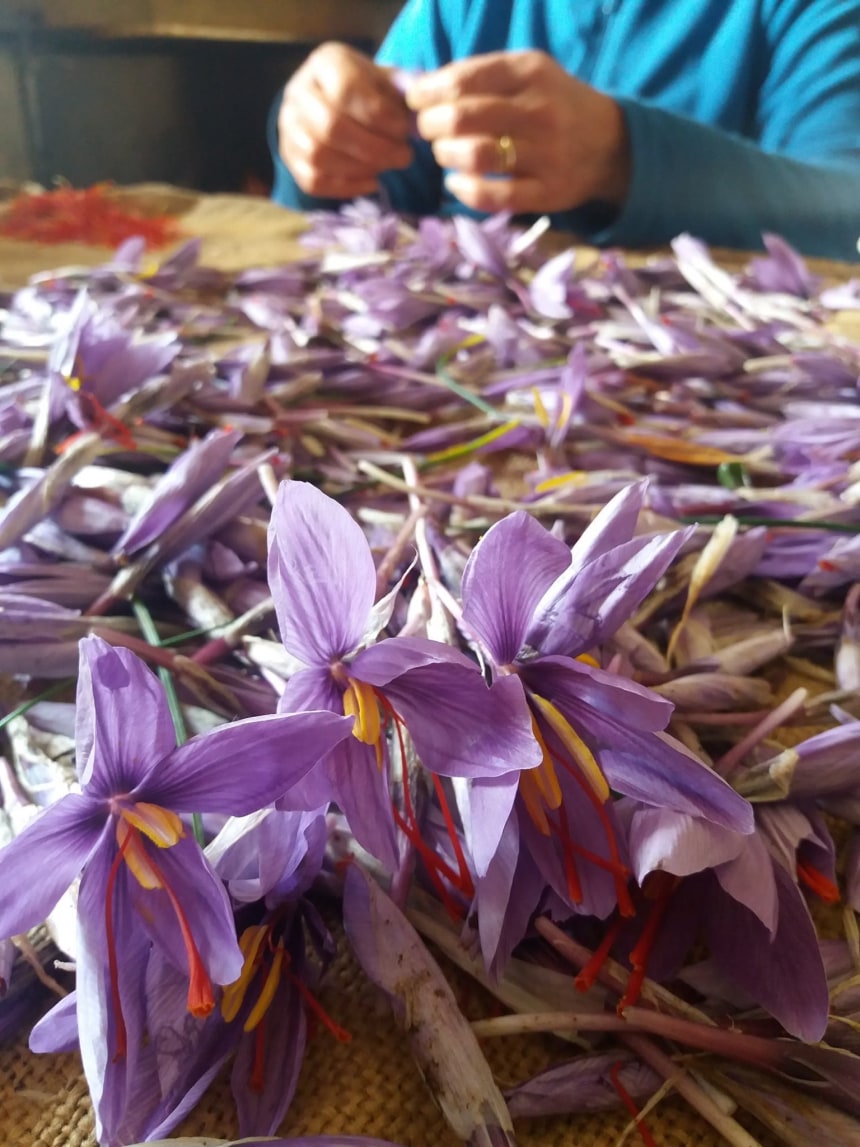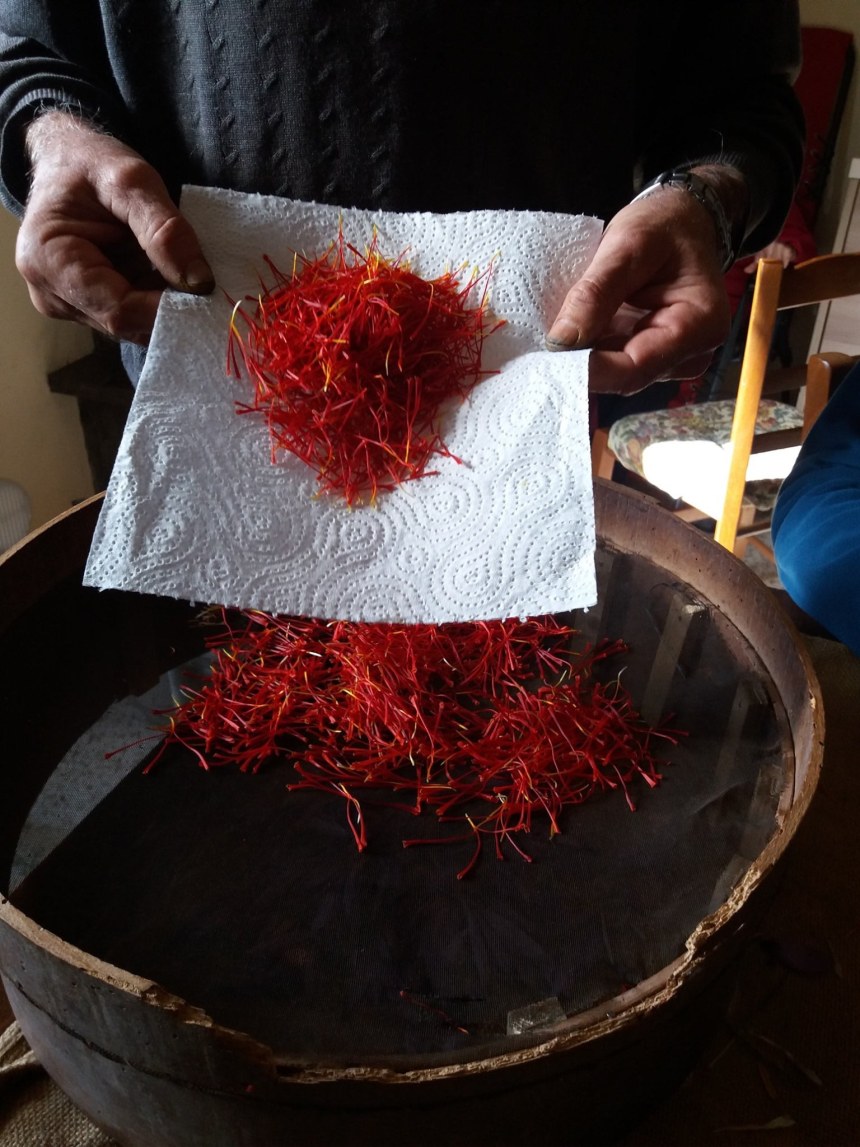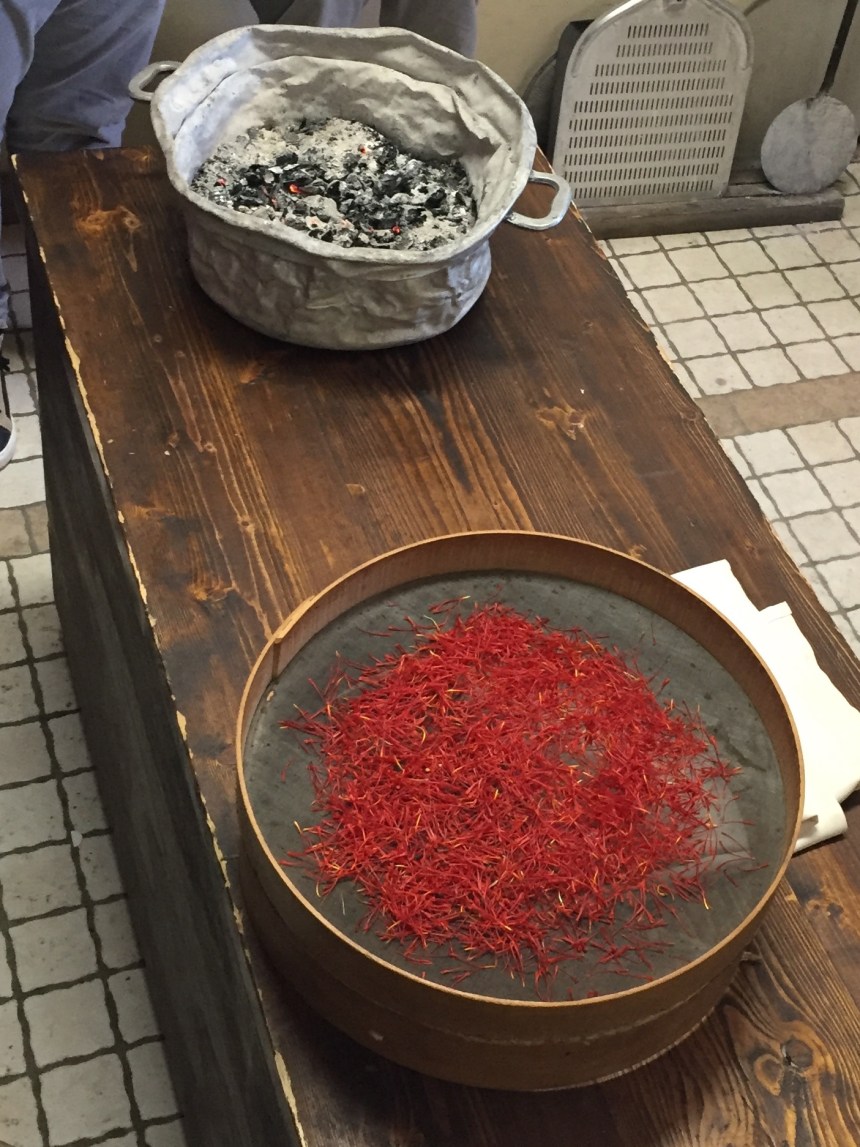
Around the middle of October, saffron flowers begin to bloom and this flowering lasts about three weeks.
1 Gram of Saffron or the Estimate 200 Purple Red Flowers
200 purplish flowers are collected in the cold and foggy autumn dawns before they open to the warmth of the sun; one by one, delicately, so as not to disperse the contents. They are brought home in wicker baskets. Open by hand, separating the precious red stigmas and yellow stigmas with patient love. Collected in sieves and places to dry in the chimneys, with oak embers.
Wisdom of ancient movements that give a historical flavour to dishes that involve the senses: intense yellow colour and enveloping aroma are the omens of the absolute pleasure to which the palate assists. Sensations impressed in the memory, as evidenced by the ancient history of Crocus Sativus L., or more commonly, the Saffron of the Eagle.
The saffron of L'Aquila, the best in the world, according to the spice purists, a unique and precious product, is an expression of the harmonious interaction between extraordinary nature and Carthusian and stubborn work of man that over the millennia has shaped one of the most beautiful agricultural landscapes and singles of Italy and the world.
This is the red gold, only purple-red stigmas, extremely refined in their simplicity, which in the supreme quality underlie ancient historical, cultural and environmental values.
So that, for centuries what happens to the blossoming of a simple flower, is still today an authentic life experience.
Saffron is cultivated with saffron from the flowers of Crocus sativus (Iridaceae), commonly known as the saffron bulb. It is propagated by bulbs called "cormi". Each corm forms new bulbs, and this is how the plant reproduces. Saffron flowers bloom in autumn and are collected for the red pistils that we all know as "saffron pistils", from which the spice is extracted.
Each bud produces three stigmas, which are carefully picked by hand. You have to gather the flowers by noon because they fade easily. This process is tedious and requires great attention. This explains why saffron has become so precious that it is called "red gold".
The crocus is cultivated in countries such as Iran, India, Afghanistan, Italy, France, New Zealand, USA (Pennsylvania), Spain, Portugal, Greece and Morocco, Turkey and some areas of China. Since the cultivation of saffron is widespread in different parts of the world, the planting techniques can vary, depending on the climate, the type of soil, the implant depth and the distance between the bulbs.
Saffron Harvest
Around the middle of October, saffron flowers begin to bloom and this flowering lasts about three weeks. Then follows a period of intense flowering, called "Cover Days", which lasts two to six days. The flowers that appear during the night must be collected at dawn on the following day, until no later than midday, to prevent the petals from collapsing. It is better to collect the flowers that are still "dormant" or closed to ensure high-quality saffron pistils.
Sfioritura
Once collected, the flowers are brought to the fading area, where the stigmas or pistils are removed by hand with great care and attention. The white and yellow parts of the stigma are not removed, but only the red ones.
Drying
Immediately after fading, it is dried, also known as roasting, which is performed daily until the last pistils are dry. Since they are too wet, the collected stigmas are dried by roasting at a temperature not exceeding 60°C. Care must be taken to ensure that the pistils do not cook too much.
Therefore the "roaster" (the person to whom the task was assigned) plays a very delicate role in the production of quality saffron. After roasting, the pistils will have significantly reduced dimensions and weight, up to 80% of the original ones. It takes five pounds of fresh stigmas to get just a pound of dried pistils, a bright red colour.
Stigmas can also be dried on hot coals or in the oven. Distribute the fresh pistils on a metal mesh lined with baking paper and place them in the center of the oven. Point the thermostat at 90°C and look carefully at the pistils for 10-20 minutes, until they are dry enough to fall.
To dry large quantities, saffron pistils are placed in a special room at a temperature of 30°C - 35°C for 10-12 hours. A more modern method is the use of a dehydrator, at 49°C, for 3 hours. It seems that the time required depends on the number of pistils to be dried.
The important thing is that they are not dried too much, because this would reduce the quality and price of saffron pistils.


